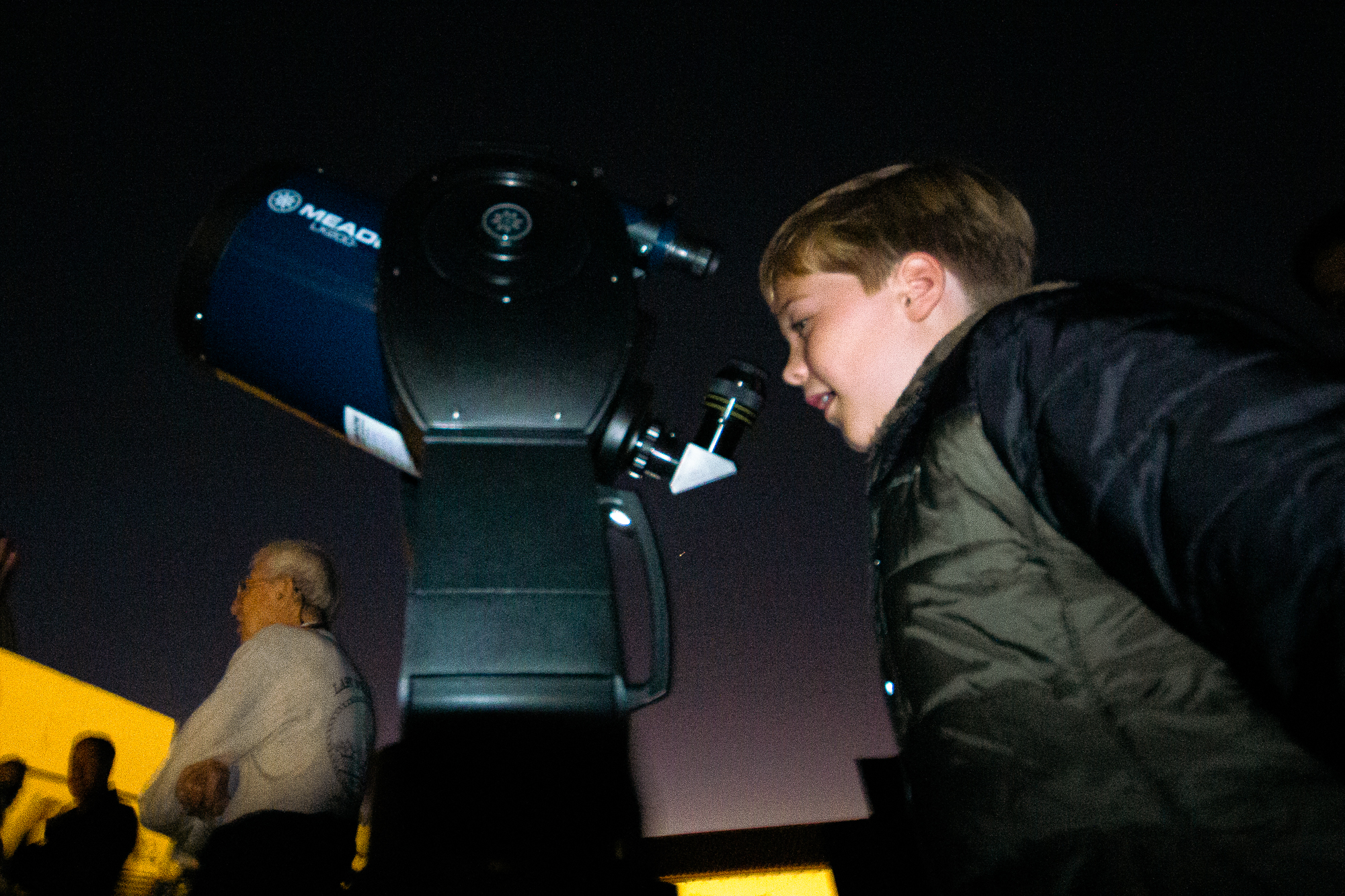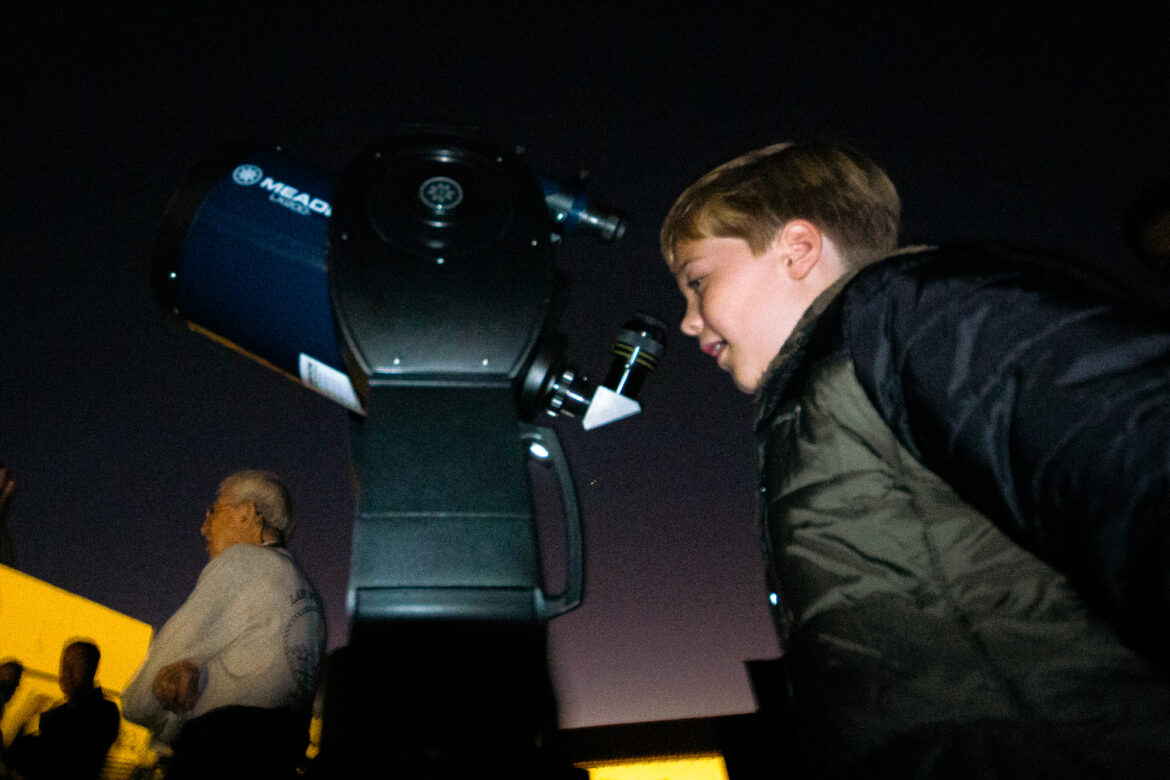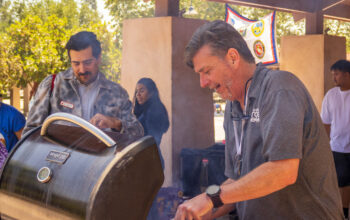
Telescope Night held its first event outside the Pierce College Planetarium Monday night after a two year hiatus.
The star attractions? Jupiter, Saturn, and the moon.
“The three easiest and brightest things for us to see tonight,” Physics and Planetary Sciences Dept. Chair and Astronomy professor Dale Fields said.
“You’ll not only look at the moon and see a thing, you’ll be looking at the moon and see a place,” Fields said. “We’re also gonna see Jupiter. You’ll be able to see the stripes and different cloud layers in Jupiter as well as Jupiter’s moons, as well as Saturn and its rings and some of its own moons.”
Fields also hopes to see galaxies, Globular clusters, or a gas cloud.
Fields said COVID restrictions was the reason for the hiatus and “now that things are settling down, we wanted to bring these back to our campus.”
The public got a chance to view the night sky with two of the college’s Meade LX200 8-inch Schmidt-Cassegrain telescopes pointed at different stars. The viewing area was surrounded by black screens, protecting the eyes from the building’s light pollution.
“The more light that we can stop receiving, the better they’re gonna see out there in the universe,” said Fields. “It’s actually good for humans because these screens mean that your eyes can adjust to the darkness and be ready to see the very faint things that you can see inside the telescope.”
People also brought in their own telescopes to share and partake in the event.
Los Angeles Astronomical Society (LAAS) member Philip Taylor brought his electronic telescope for casual viewing and demonstrated how he can control his telescope and take pictures from his smartphone. He mentioned using this telescope to look at faint galaxies and distant objects, and how these stars reflect the past.
“Using a telescope is a time machine. When you see an object, you’re seeing what it looked like in the past, so when you look at the moon, you don’t see the moon. What you see is light from the sun shining on the moon and then coming back and then you see that,” Taylor said. “So when you look at an object—anything, even the building. anything you look at—you don’t see it. You see the light. The light has to come from somewhere. It’s either emitted or it’s reflected and that’s what our eyes pick up.”
Retired teacher and fellow member of the LAAS Iraneide Deoliveira said the best part of the event was seeing people looking through a telescope for the first time.
“How excited they get when they see the objects we’re looking at. People really like Saturn because of the rings,” Deoliveira said. “It’s so different and so beautiful. They always ask, ‘Where on the moon did Apollo 11 land?’ They ask questions that are really interesting.”
When asked about her favorite part of the event, Deoliveira said looking at Saturn because “of the rings, and when you can see the moons and identifying them. That’s my favorite part of it.”
Looking at his phone, Taylor said his telescope picked up a vibration. “It’s a breezy night and this thing’s sensitive to the wind. It may not work. It looks like it is working.”
Telescope Nights marks the first of four events. The next two shows are Planetarium shows which will be at the Planetarium Tuesday, Oct. 18 from 2 to 4 p.m. and Friday, Oct. 28 from 5 to 7 p.m.
The last Telescope Night will be on Wednesday, Nov. 30 from sunset to 10 p.m.




